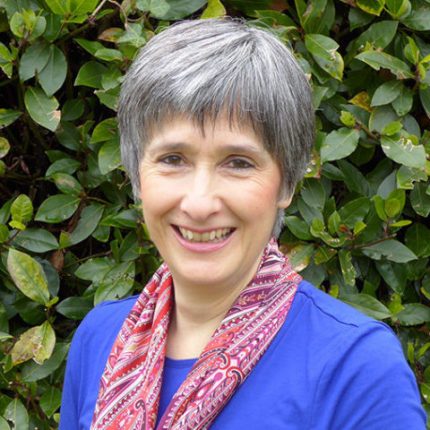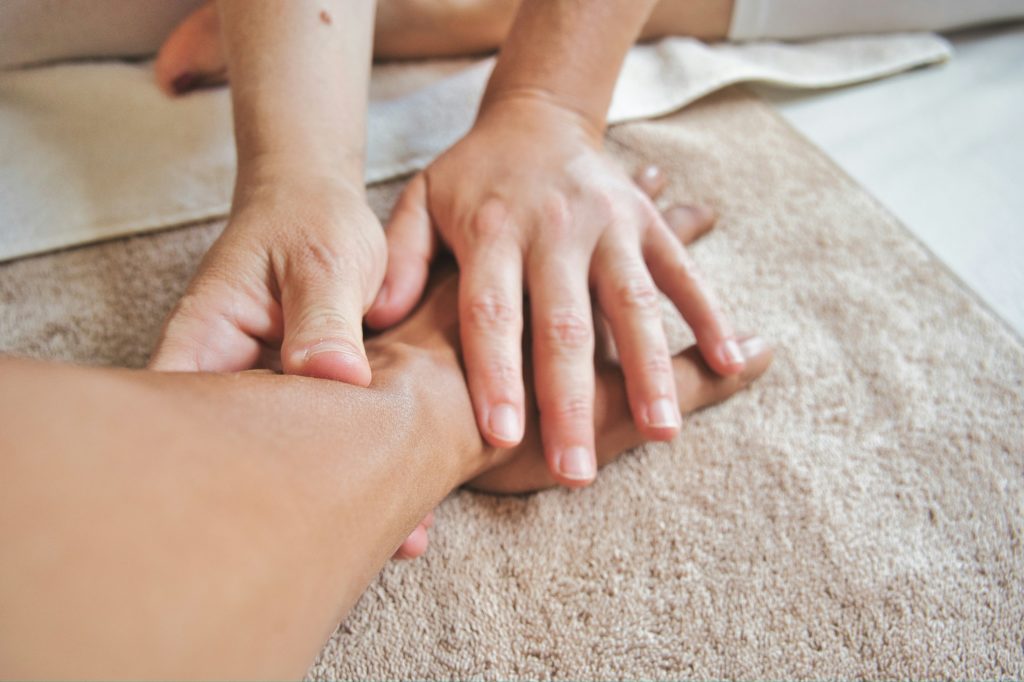3rd April 2024 In Emerson Stories, Feature, News By Adeline Garman
Rhythmical Einreibung and Rhythmical Massage Therapy

Emerson College is delighted to offer courses in both Rhythmical Einreibung and Rhythmical Massage Therapy. In this article Rhythmical Einreibung course leader Fiona Sim gives us some insight into each type of massage.
Definitions of RE and RMT
Rhythmical Einreibung and Rhythmical Massage Therapy are two distinct disciplines which share common origins. Rhythmical Massage Therapy evolved from the work of Dr Ita Wegman and Dr Margarethe Hauschka. Rhythmical Einreibung (RE) developed from one technique of Rhythmical Massage Therapy (RMT), the effleurage quality, and has since been refined into a gentle massage used by nurses and carers.
While they share common origins and similarities, grounded in the Anthroposophic medical understanding of the human being, there are also important differences between the two disciplines which we aim to identify here.
Firstly, RMT, as the name suggests, is a therapy practised by Massage Therapists, RE is a technique used by nurses, carers, other health care professionals, educationalists and lay people. Hence, RE is often used in clinical settings, but can also be used by Nurse Practitioners as an independent treatment.

What are the qualities of RE and RMT
Both disciplines share the word Rhythmical in their title, which gives a clue to their essential quality – gentle, rhythmical movements which relate to the life processes of the human being and support its own innate healing forces. Both RE and RMT are body therapies, addressing the physical body, but they also address the finer bodies – the etheric body through the flowing, adaptive, watery quality of movement, the astral body through the rhythmical, breathing quality and the ego organisation via the care and support of the warmth and respectful recognition of the individual. In this sense they are more and other than a body therapy.
While RE uses largely the effleurage quality, with a few exceptions including the phase-shift circles and down-strokes, RMT uses a wider variety of techniques including effleurage, kneading, airy kneading, friction, (vibration, percussion). In both disciplines the touch remains light, without deep pressure; where deeper tissues are addressed a suction quality is used in RMT, bringing levity and drawing the tissue into the hand rather than pressing down with force. This same suction quality is also used in a few instances in RE.
Key similarities between RE and RMT
Other similarities which are particular to the two disciplines of RMT and RE include:
- treating the organs – heart, liver, spleen, kidneys and bladder.
- various Pentagram treatments which address the structure of the etheric body with a refined sequence of touch.
- The forms of movements used in RMT include straight line, circle, lemniscate, spiral; similar forms are used in RE with the exception of the spiral.
- Minimising exposure of the body during treatments, with only one area at a time being uncovered. RE has refined wrapping techniques as part of the Whole-Body Treatment.
- Supporting the warmth on all levels, including a warm environment, and using substances with inherent warmth qualities.
- A rest after the treatment, in RE this is ideally of comparable length to the duration of the treatment.
Key differences between RE and RMT
Some key differences in addition to the main point, already mentioned, that RMT is a discrete Therapy, include:
- Frequency of treatments: RMT is given a maximum of 2-3 times per week in clinical setting and often weekly in an out-patient setting, whereas RE can be given more frequently as part of nursing care, often daily or even hourly as part of pressure relief care. It may also be given weekly or singly as a stand-alone treatment.
- In RMT part of the body will be treated in each session, never the whole body, whereas in RE both different combinations of part RE can be used and there is also a specific sequence where the whole body is treated.
- Training: RMT is a longer training and open to those with an existing, recognised bodywork qualification, foundation training in RE is open to all and is often learnt as part of a vocational training in a clinical setting. As an independent training an RE Foundation Course is likely to be considerably shorter than a full RMT training. The more advanced trainings in RE are only available to those with an existing professional qualification, such as Registered Nurses.
- As we have discussed both disciplines are gentle and therapeutic and therefore suitable for people who are unwell and for treating a wide range of illnesses and health conditions; however, RE is suitable for even the frailest of patients and so will sometimes be used by RMT practitioners in those situations.
- There is a greater range of specific therapeutic options with RMT, whereas RE has more of a general, universal quality whereby a wide range of conditions may be treated with the same sequence of movements.
How are the two disciplines used?
An illustration of the use of RMT and RE in an in-patient setting may be helpful, here someone may receive three RMT sessions per week, but also receive daily RE as part of nursing care and a foot RE at night to help them sleep.

In out-patient settings RMT practitioners and Nurse practitioners may work alongside each other, and here a course of weekly treatments would be usual.
Anthroposophically qualified medical practitioners may prescribe or refer clients for RMT and RE. In which case a RMT practitioner will decide the specific details of the therapy sessions. In the case of RE there are different options depending on the situation: the doctor may give a specific prescription, for example, Liver and Spleen Einreibung 3 x week with copper ointment or, equally, an independent RE Practitioner may decide the treatment details in conjunction with the client.
Summary
Hopefully this short article has been helpful in outlining the relationship between these two distinct and inter-connected disciplines. Obviously, it has only been possible to touch on specific details and learning either of the therapeutic techniques is a process that takes time and commitment.
Training options
Both RMT training and RE foundation level training are available at Emerson College. For further information on RMT training go to Rhythmical Massage Therapy Training UK. If you’re interested in the RE foundation level course, which starts this autumn, please click this link.
If you are unsure which training is most appropriate for you a conversation with the course tutors could be helpful.

